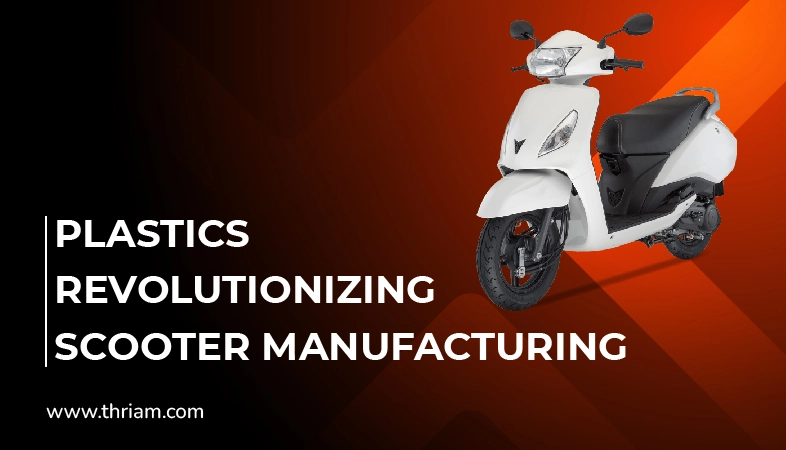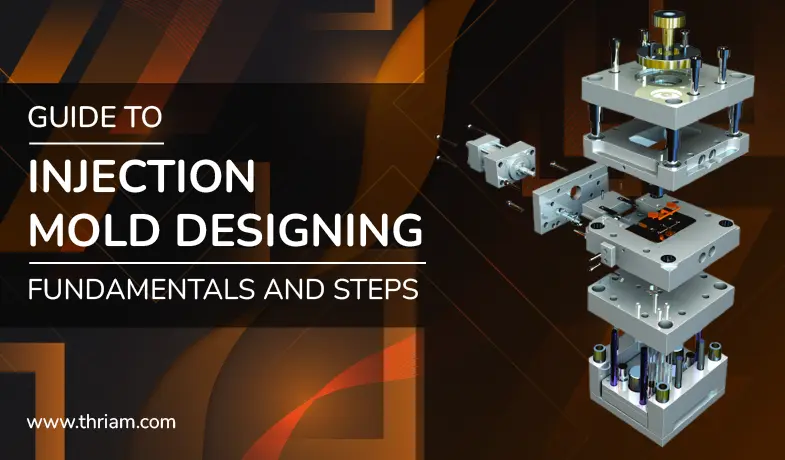10 Injection Moulded Plastic Parts in Motorcycles
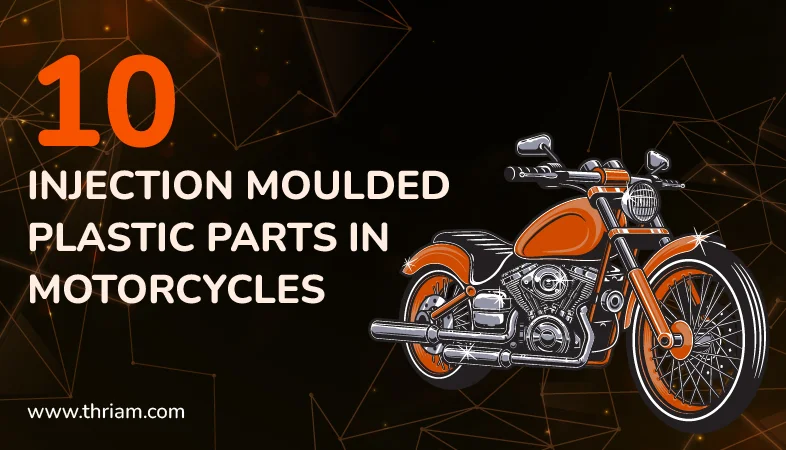
Motorcycles are a seamless blend of performance, design, and functionality. Behind their sleek exteriors, a plethora of injection moulded plastic parts work harmoniously to provide riders with a safe and exhilarating experience. The use of injection moulded parts in motorcycles has transformed the manufacturing process.
The advantages of using injection moulded parts in motorcycles are undeniable. From their lightweight nature and design flexibility to their cost-effective production and superior strength, injection moulded parts provide numerous benefits to manufacturers and riders alike. Enhanced safety, consistent quality, and durability further solidify their value in motorcycle manufacturing.
In this blog post, we will delve into 10 essential injection moulded plastic parts found in motorcycles, exploring the materials used, their functions, and the advantages of using injection moulded plastic parts in motorcycle.
10 injection moulded parts
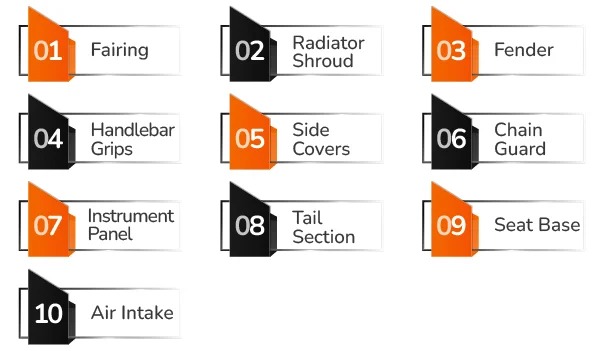
1. Fairing:
Material Used: ABS (Acrylonitrile Butadiene Styrene)
Function: Fairings serve multiple purposes. They reduce air drag, creating a more streamlined ride. Additionally, fairings protect the rider from wind, debris, and weather elements, enhancing safety and comfort.
2. Radiator Shroud:
Material Used: Polypropylene (PP)
Function: Radiator shrouds are covers that surround the radiator, protecting it from potential damage while promoting proper airflow. By ensuring efficient cooling, they contribute to the motorcycle's overall performance and longevity.
3. Fender:
Material Used: High-Density Polyethylene (HDPE)
Function: Fenders shield the wheels, preventing dirt, water, and debris from being thrown up, safeguarding the rider and other vehicles. Moreover, they contribute to the motorcycle's aesthetics, enhancing its visual appeal.
4. Handlebar Grips:
Material Used: Thermoplastic Elastomer (TPE)
Function: Handlebar grips provide riders with a secure and comfortable grip, reducing hand fatigue and enhancing control. TPE materials offer excellent grip properties and vibration dampening, ensuring a more enjoyable and safer ride.
5. Side Covers:
Material Used: Polypropylene (PP)
Function: Side covers are panels that protect the engine and other internal components while providing access for maintenance and repairs. They play a vital role in shielding these sensitive parts from external elements and maintaining the motorcycle's structural integrity.
6. Chain Guard:
Material Used: Polycarbonate (PC)
Function: Chain guards are designed to protect the chain from dirt, debris, and contact with the rider's clothing or limbs. They contribute to rider safety and minimize the risk of accidents caused by chain-related issues.
7. Instrument Panel:
Material Used: Polycarbonate (PC)
Function: The instrument panel, commonly known as the dashboard, houses various gauges, indicators, and warning lights. The transparency and impact resistance of polycarbonate ensure clear visibility and durability, allowing riders to easily monitor their speed, fuel level, and other critical information.
8. Tail Section:
Material Used: ABS (Acrylonitrile Butadiene Styrene)
Function: The tail section is responsible for covering the rear end of the motorcycle. Apart from housing the rear light, license plate, and turn signals, it also enhances aerodynamics and contributes to the overall visual appeal of the motorcycle.
9. Seat Base:
Material Used: Polypropylene (PP)
Function: A seat base provides the foundation for the foam or cushion on which the rider and passenger sit. It needs to be durable, comfortable, and stable to ensure a pleasant and secure riding experience.
10. Air Intake:
Material Used: Nylon (Polyamide)
Function: The air intake system connects the air filter to the engine, allowing the crucial flow of air for efficient combustion. Nylon, with its impressive strength and heat resistance properties, ensures the sustained functionality of this critical component.
Advantages of Injection moulded Parts in Motorcycles
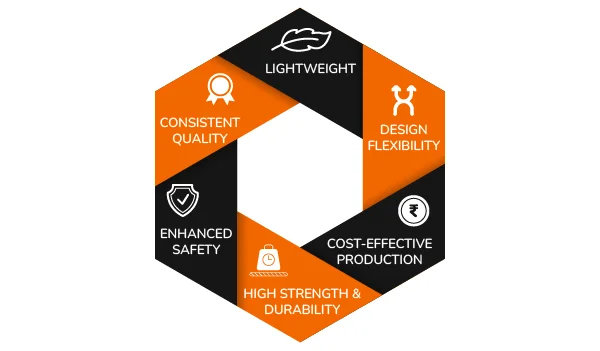
Lightweight:
One significant advantage of using injection moulded parts in motorcycles is their lightweight nature. Injection moulding allows for the production of intricately designed parts with minimal material usage. This lightweight characteristic improves the motorcycle's agility, handling, and fuel efficiency, offering riders a more enjoyable and economical riding experience.
Design Flexibility:
Injection moulding offers unparalleled design flexibility, allowing manufacturers to create complex and intricate shapes that cannot be easily achieved through other manufacturing methods. This freedom in design enables the creation of streamlined fairings, sleek fenders, and stylish components, enhancing the motorcycle's overall aesthetics and making it stand out on the road.
Cost-Effective Production:
Injection moulding is a cost-effective production method for motorcycle parts. The moulds used in the process can be reused multiple times, making it an efficient and economical manufacturing solution. Additionally, the ability to produce large quantities of parts in a relatively short amount of time further contributes to cost savings for manufacturers and ultimately for customers.
High Strength and Durability:
Injection moulded parts are known for their excellent strength and durability. The materials used in the injection moulding process, such as ABS, Polypropylene, and Polycarbonate, offer exceptional resistance to impact, weathering, and wear. This durability ensures that the motorcycle parts can withstand the harsh conditions of the road, increasing their lifespan and reducing the need for frequent replacements.
Enhanced Safety:
Injection moulded parts play a crucial role in enhancing rider safety. Components like fairings and fenders protect riders from wind, debris, and weather elements, reducing the risk of accidents caused by impaired visibility or distractions. Additionally, injection moulded parts like chain guards and instrument panels contribute to maintaining the proper functioning of critical motorcycle systems, augmenting overall rider safety.
Consistent Quality:
Injection moulding allows for precise control over the manufacturing process, ensuring consistent quality across all produced parts. The automated nature of injection moulding minimizes human errors, resulting in parts that meet strict tolerances and specifications. This reliability in quality ensures that motorcycles perform optimally and that riders can rely on their machines without worrying about component failures.
Conclusion:
Injection moulded plastic parts have revolutionized motorcycle manufacturing, enabling motorcycles to possess lightweight, durable, and aesthetically pleasing components that enhance both performance and safety. From fairings and fenders to instrument panels and air intakes, each injection moulded plastic part serves a specific purpose in improving the rider's overall experience. By understanding the materials used and the functions these components fulfill, we can truly appreciate the craftsmanship and engineering that go into creating these remarkable machines. Safe rides and unforgettable journeys await, thanks to these 10 essential injection moulded plastic parts in motorcycles.

